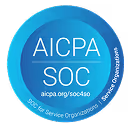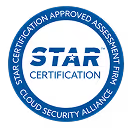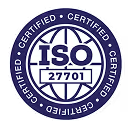In professional services, where people are the key resource, optimizing how you manage your team’s time and skills can make or break your business. Resource optimization is the strategic process of ensuring that the right team members are working on the right tasks at the right time to maximize efficiency, meet client expectations, and maintain a healthy work-life balance for your teams.
In this guide, we’ll explore the concept of resource optimization, its challenges, strategies, and best practices. You'll gain the insights needed to manage your team’s availability and skills in a way that drives productivity and profitability.
Whether you’re a PS leader, project manager, resource planner, or business owner, this comprehensive guide will help you improve your resource management processes and deliver better outcomes for your clients.
In this article
- Guide to resource optimization
- What is resource optimization?
- Challenges of resource optimization
- Key strategies for effective resource optimization
- How to optimize resources
- Best practices for resource optimization
- The best methods for resource optimization
- Measures for assessing the optimization of resources
- How Rocketlane simplifies resource optimization
- FAQs
Guide to resource optimization
For any professional services organization (PSO), resource optimization is essential for managing projects and team members effectively. The success of any project hinges on aligning the right people with the right work and ensuring they’re neither overworked nor underutilized.
The right tools and processes help provide insights into team members’ capacity and availability, ensuring you have the data needed to optimize your human resources efficiently.
What is resource optimization?
Resource optimization, in the context of professional services, refers to managing your team’s time and skill sets to match project demands. It involves strategically allocating your available talent to current and future projects in a way that maximizes both productivity and employee well-being.
The resource optimization process generally includes:
- Assessing demand: Analyzing upcoming projects and their resource needs based on skill requirements and availability.
- Evaluating current capacity: Reviewing your team’s current workload, availability, and individual expertise to understand how well they can handle upcoming tasks.
- Identifying optimization opportunities: Looking for opportunities to improve team allocation, whether through redistributing workload, upskilling, or hiring.
- Allocating resources: Assigning team members based on skill match, availability, and project priority.
- Monitoring performance: Continuously tracking resource allocation and project progress, making adjustments as necessary.
By ensuring that you have the right people on the right tasks, resource optimization not only enhances project outcomes but also maintains team morale and reduces burnout.
Challenges of resource optimization
Resource optimization is a complex process with several challenges that PSOs commonly face:
Predicting demand
Anticipating the demand for resources can be tricky, especially when multiple projects are running concurrently or the client suggests last-minute change. Accurate forecasting is essential to avoid overcommitting or underutilizing your team.
Managing conflicting priorities
With multiple projects often competing for the same people, determining how to allocate resources can be challenging. Mismanagement can lead to delays, overworked staff, or missed deadlines.
Skills mismatch
Allocating resources isn’t just about filling in gaps. It’s about ensuring that the right people with the right skills are assigned to tasks. Without an understanding of individual strengths and availability, project performance may suffer.
Capacity gaps
When the demand for resources exceeds your team’s availability, you either need to hire additional staff or delay projects—both of which come with their own sets of challenges. Alternatively, a lack of demand may lead to underutilized resources, costing the business in terms of wasted hours and lost opportunities.
Tracking and reporting
Keeping track of resource allocation, utilization rates, and project outcomes in real-time can be difficult without the right tools. Manual tracking through spreadsheets often leads to inefficiencies and inaccuracies.
Key strategies for effective resource optimization
Resource optimization requires a mix of strategic planning and tactical adjustments. Here are some key strategies to optimize your team's capacity effectively:
Demand forecasting
Use historical data and client insights to forecast resource needs accurately. Look for trends in project types, workloads, and timelines to predict future demand. Having the ability to analyze past data helps in making better resource planning decisions.
Skill-based allocation
Ensure that team members are assigned tasks that match their expertise. This improves project quality, reduces time spent on corrections, and enhances job satisfaction for employees.
Load balancing
Monitor your team’s workload regularly to prevent burnout. Overloading your team can lead to poor performance and high turnover. Having real-time visibility into resource capacity helps you make adjustments and keep workloads balanced.
Flexibility in resource allocation
Resource needs often change during the course of a project. Ensure your processes allow for flexibility in reallocating people as priorities shift. Tracking progress and resource utilization can make it easier to reassign team members when needed.
How to optimize resources
Optimizing resources within a PSO involves several steps to ensure your team’s capacity is being used to its fullest potential. Here’s how you can efficiently optimize resources in your PSO:
Assess resource needs
Evaluate upcoming projects and their requirements. How many team members will you need? What skill sets are crucial? Understanding these requirements early helps with effective planning.
Evaluate current availability
Take stock of your current team. Who is available? What are their strengths? Are there any gaps in capacity or skills that need to be addressed through training or hiring?
Plan and allocate
Use tools that allow you to allocate resources based on availability and skills. Balance the workload across your team and ensure that high-priority projects are resourced appropriately.
Monitor utilization
Track how your team is performing and make sure no one is overburdened. Having real-time reporting features helps you adjust resources as projects progress and client demands change.
Best practices for resource optimization
Follow these best practices to maximize your team’s productivity and ensure smooth operations:
Be proactive with forecasting
Don’t wait until you’re short on resources to start planning. Forecast future resource needs by analyzing trends and client demands. This allows you to avoid last-minute scrambles.
Communicate across teams
Ensure open lines of communication between project managers and team members. Misalignment can lead to underutilization or overwork. A centralized dashboard helps keep everyone on the same page.
Regularly review and adjust
Resource optimization is not a one-time process. Regularly review your resource allocation, make adjustments as projects evolve, and reassign team members as necessary to keep workloads balanced.
Utilize the right tools
Manual tracking methods are prone to error. Invest in tools that provide real-time insights into resource utilization, availability, and project needs. Automated features reduce administrative burden and help you focus on strategic decisions.
The best methods for resource optimization
Effective resource optimization in professional services requires a blend of strategic planning and tactical adjustments. Below are two of the most effective methods used to ensure that your team’s capacity is fully utilized without overburdening anyone, while also maintaining project timelines.
Resource leveling
Resource leveling is a technique that adjusts project timelines based on resource availability. The goal of resource leveling is to resolve conflicts caused by over-allocation by shifting project schedules so that resources are spread more evenly. This ensures that your team members aren't overloaded with too much work at once, preventing burnout while still meeting project deadlines.
In this method, the start or end dates of project tasks may be extended to avoid exceeding resource availability limits. Resource leveling is particularly useful when there are limited resources, multiple overlapping projects, or changing project priorities.
Advantages of resource leveling:
- Prevents employee burnout: Resource leveling avoids scenarios where certain team members are overworked while others are underutilized by distributing work more evenly.
- Ensures balanced workloads: No single individual is tasked with too much work at once, leading to a more harmonious work environment and better overall morale.
- Improves project delivery: Although timelines may be extended, resource leveling enhances the chances of delivering quality work because employees can focus on tasks without being overburdened.
- Maximizes resource usage: Resource leveling ensures optimal utilization of your team by shifting task schedules to match resource availability, without over-relying on any one person.
Resource smoothing
Resource smoothing is another technique used to distribute work more efficiently, but unlike resource leveling, the primary objective is to optimize resources without changing the project’s overall timeline. In resource smoothing, project deadlines remain fixed, and the focus is on adjusting resource allocation to match the defined time limits.
For example, instead of extending a project to accommodate the workload, tasks might be redistributed among team members or certain less-critical activities might be postponed. This method ensures that you are not overcommitting resources, while still maintaining your project deadlines.
Key benefits of resource smoothing:
- Maintains project timelines: Unlike resource leveling, smoothing ensures that you don’t extend your project duration, which is particularly important for time-sensitive projects.
- Minimizes resource idle time: esource smoothing reduces periods of inactivity by distributing tasks more evenly within the project’s existing timeline, ensuring team members remain engaged.
- Enhances flexibility: Resource smoothing allows for quick adjustments as priorities shift, offering flexibility without compromising project schedules.
Both resource leveling and resource smoothing are valuable techniques for optimizing team capacity while delivering projects efficiently and on time.
Metrics for assessing the optimization of resources
To determine the success of your resource optimization strategies, it’s important to measure performance using specific metrics. These key performance indicators (KPIs) help you understand how efficiently you are utilizing your team, where improvements can be made, and whether your approach is driving the desired business outcomes.
Resource utilization rate
This metric calculates the percentage of your team’s available time that is spent on billable or productive work. A high utilization rate typically indicates that your resources are being used effectively, while a low rate may suggest inefficiencies, such as underutilization or overstaffing.
Formula:
Resource Utilization Rate = (Billable Hours / Available Hours) x 100
A higher utilization rate means your team is consistently engaged in productive tasks, maximizing their contribution to project outcomes. However, it’s important to balance high utilization with employee well-being to avoid burnout.
Resource allocation efficiency
This measure assesses how well your resources are being matched to their tasks based on their skill sets, availability, and the demands of the project. Efficient resource allocation ensures that tasks are handled by the right people, leading to better project quality, faster delivery, and improved team satisfaction.
Key points to monitor:
- Skill match: Are tasks assigned to those with the right expertise?
- Availability: Are team members being assigned work during periods when they are available, or are there scheduling conflicts?
- Project priority: Are your highest-priority projects getting the best resources?
Resource allocation efficiency helps you avoid mismanagement of talent and ensures that projects move forward smoothly with the right people in place.
Resource cost variance
This metric compares the planned costs of your resources to the actual costs incurred during the project. It helps you assess whether you are staying within budget or overspending on resource allocation.
Formula:
Resource Cost Variance = (Actual Resource Cost – Planned Resource Cost) / Planned Resource Cost
Monitoring cost variance allows you to see if there are any discrepancies between what was forecasted and what is actually being spent on human resources. If actual costs are consistently higher than planned, it might indicate inefficiencies such as overtime, unplanned hires, or incorrect allocation.
Resource turnover rate
Resource turnover rate refers to the frequency at which team members leave the organization or are replaced. High turnover can disrupt project continuity and signal deeper issues within your resource management strategy, such as poor allocation, overwork, or lack of employee engagement.
Formula:
Resource Turnover Rate = (Number of Departures / Average Number of Resources) x 100
A high turnover rate can have a negative impact on resource optimization, leading to project delays, lost knowledge, and higher recruitment costs. Monitoring this metric helps you address employee satisfaction and retention proactively.
How Rocketlane simplifies resource optimization
Rocketlane’s PSA software is built to handle the complexity of resource optimization for professional services teams. Here’s how it simplifies the process:
Real-time insights
Gain real-time visibility into your team’s availability, skills, and utilization rates, allowing for quick adjustments to your resource allocation as needed.
Skill-based resource matching
Easily match the right team members to tasks based on their skillsets and availability, ensuring that projects are completed efficiently and to a high standard.
Centralized dashboard
Manage your entire team and project pipeline from one platform. Rocketlane’s intuitive dashboard keeps everyone aligned, from project managers to team members, so nothing slips through the cracks.
Automated reporting
Track performance, monitor capacity, and generate utilization reports with a click. Automation saves time and helps you make informed decisions without needing to manually compile data.
Ready to optimize your team’s resources?
Book a demo with Rocketlane today!
FAQs
1. What is resource optimization in professional services?
Resource optimization in professional services refers to the process of strategically managing your team’s time, skills, and availability to ensure they are working on the right tasks at the right time. It maximizes productivity, improves project outcomes, and helps maintain a healthy work-life balance for your employees.
2. How does resource optimization benefit my business?
Optimizing your resources leads to lower operational costs, better decision-making, improved employee efficiency, and enhanced project quality. By effectively managing resources, businesses can unlock growth opportunities, reduce employee turnover, and maintain transparency across teams.
3. What’s the difference between resource leveling and resource smoothing?
Resource leveling adjusts project timelines to balance resource workloads, helping prevent over-allocation and burnout. Resource smoothing, on the other hand, optimizes resources while keeping project timelines fixed, ensuring that deadlines are met without overburdening employees.
4. How can I measure the success of my resource optimization efforts?
Key metrics for assessing resource optimization include:
- Resource utilization rate: Measures the percentage of time resources spend on billable tasks.
- Resource allocation efficiency: Evaluates how well team members are assigned tasks based on skill sets and availability.
- Resource cost variance: Compares planned versus actual costs of using resources.
- Resource turnover rate: Tracks how often employees leave or are replaced.
5. What are the common challenges of resource optimization?
Challenges include accurately forecasting demand, managing conflicting project priorities, ensuring the right skills are matched to tasks, avoiding capacity gaps, and keeping track of resource allocation in real-time without the right tools.
6. How can I improve resource optimization in my organization?
To improve resource optimization, you can:
- Utilize forecasting to predict future resource needs.
- Ensure skill-based matching for task assignments.
- Regularly review and adjust workloads to avoid overburdening team members.
- Invest in tools that provide real-time insights into resource availability and project needs.
7. How does Rocketlane help with resource optimization?
Rocketlane provides a centralized platform for managing resources, offering real-time insights into team availability, skill-based matching for task assignments, and automated reporting on resource utilization and efficiency. This helps professional services teams streamline their resource management and deliver projects on time and within budget.
.jpg)











